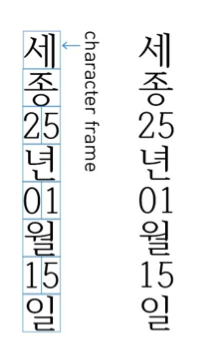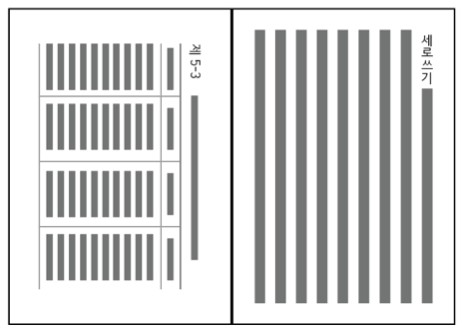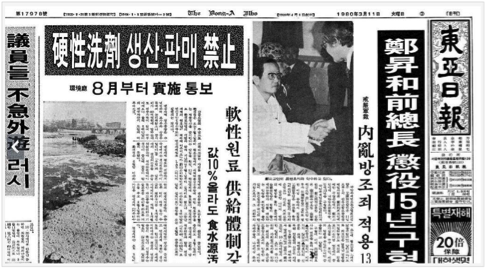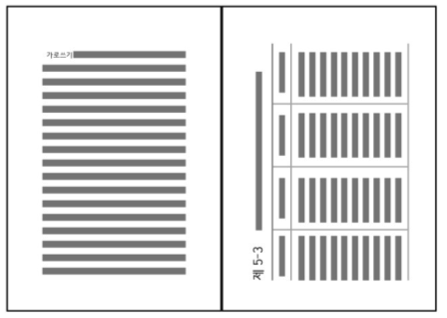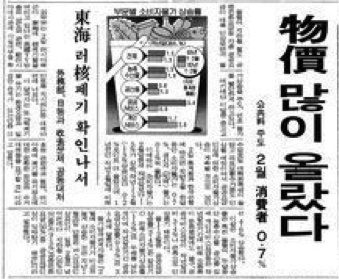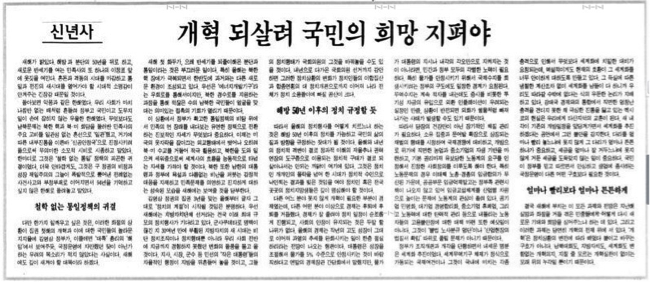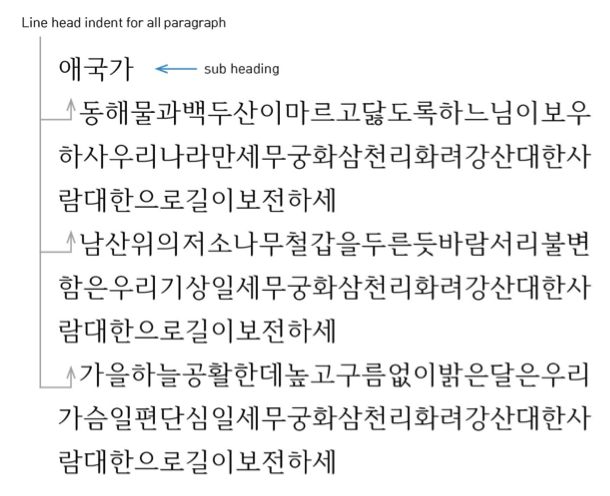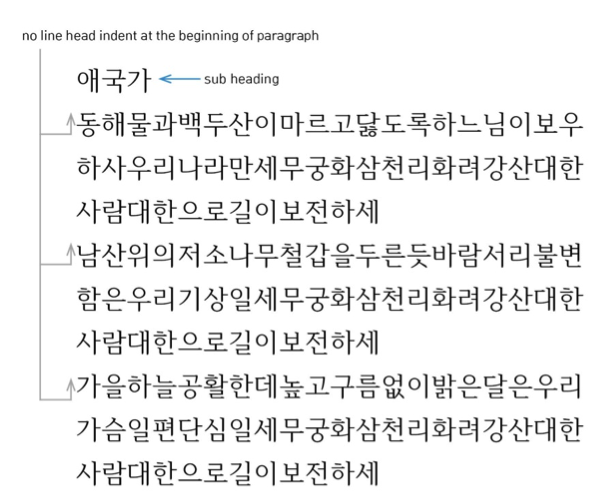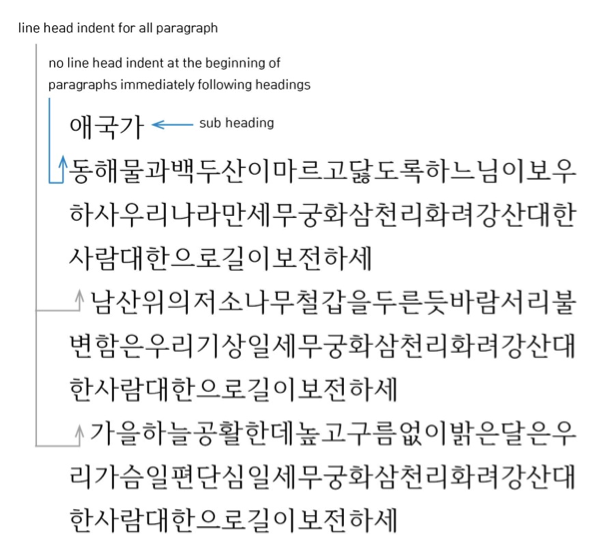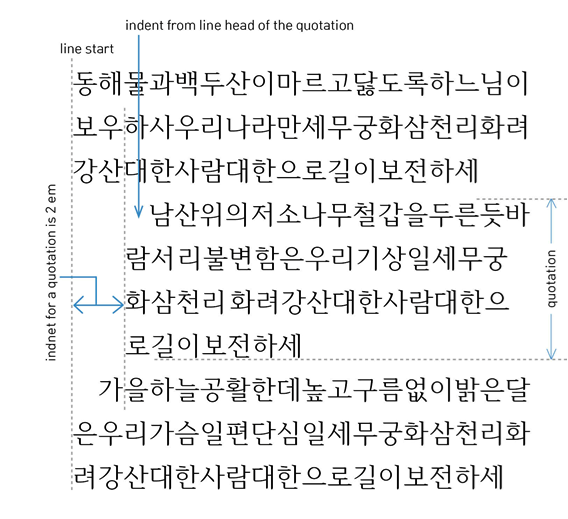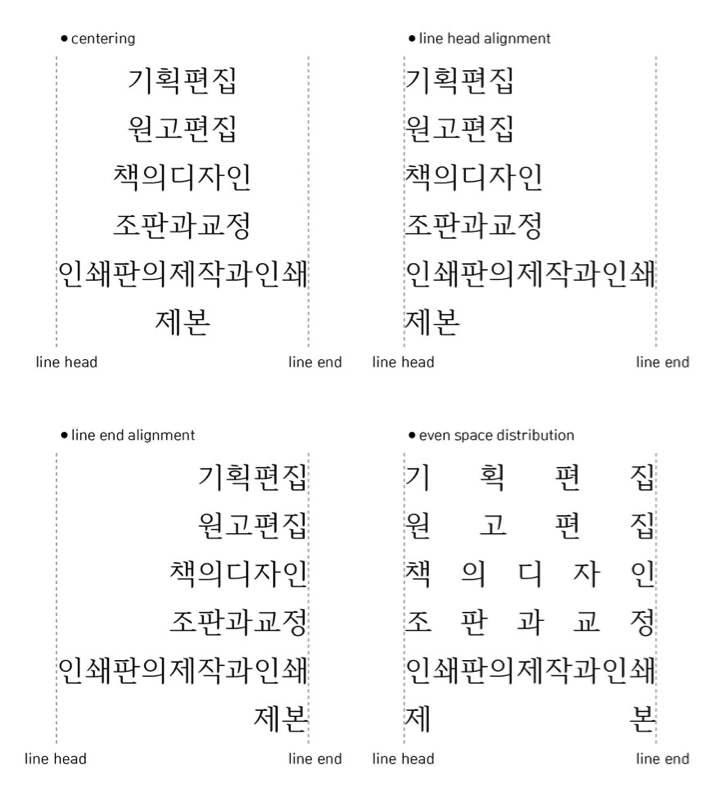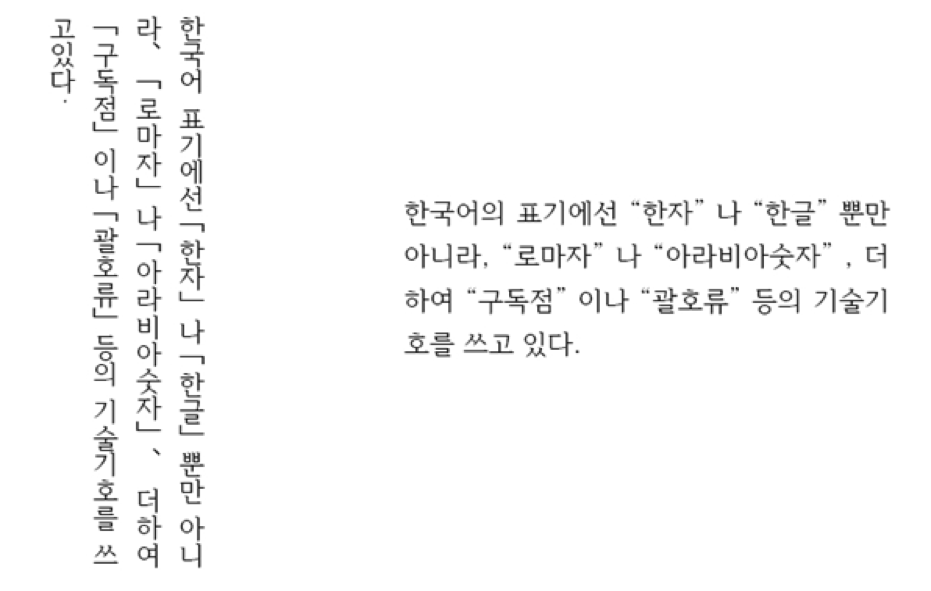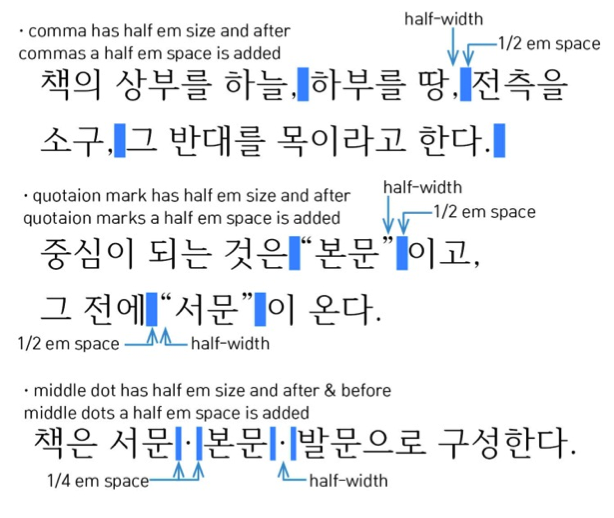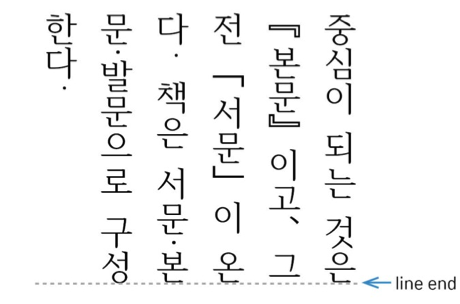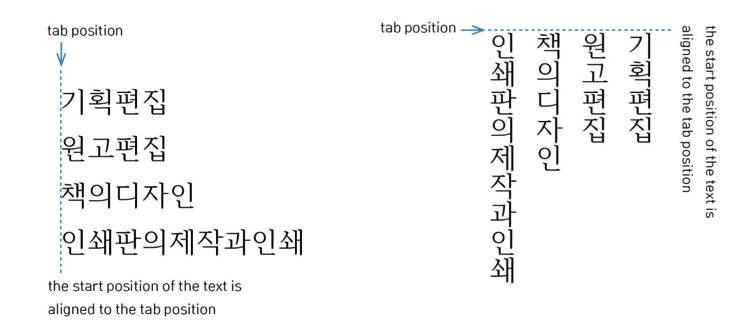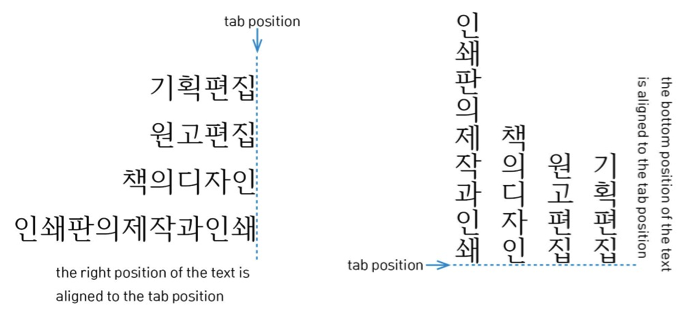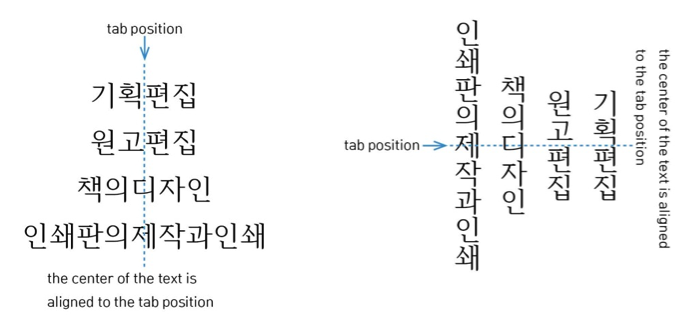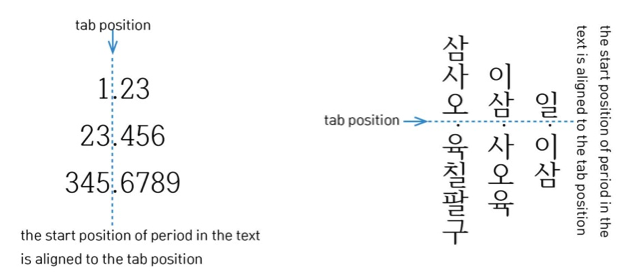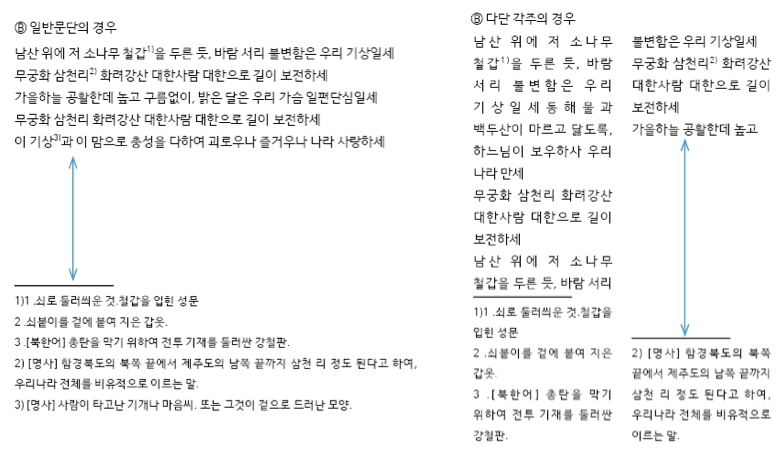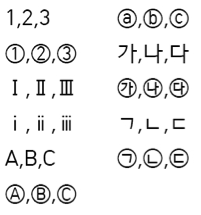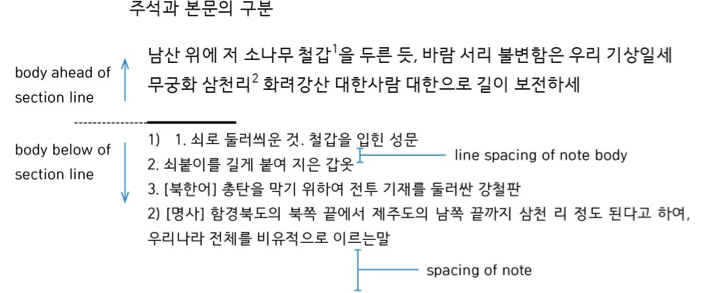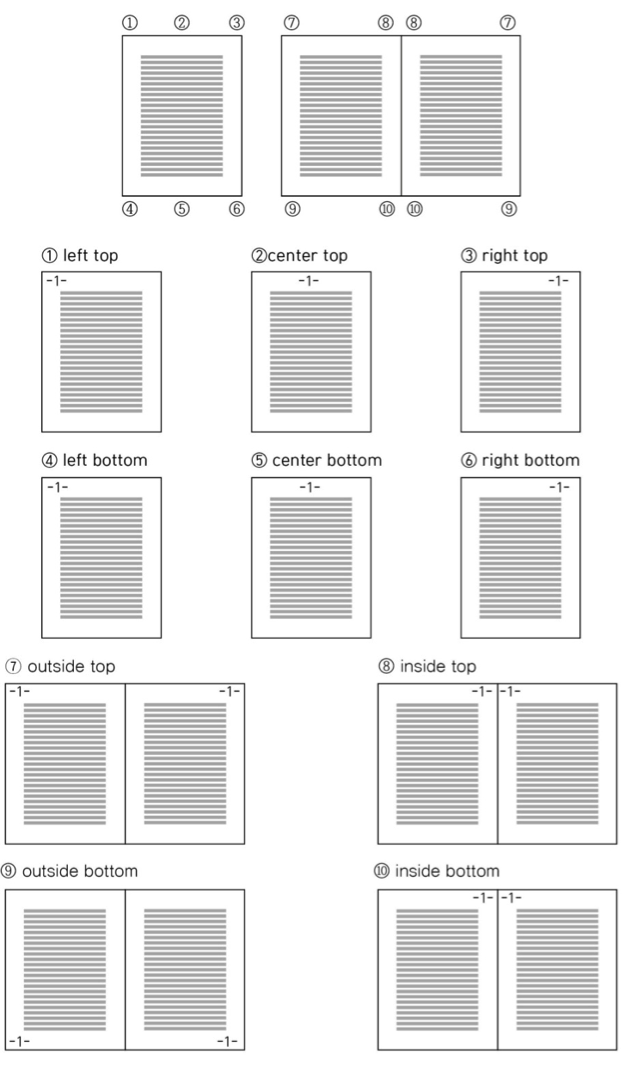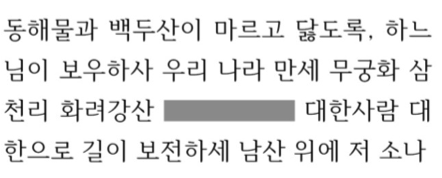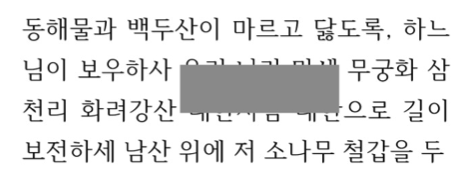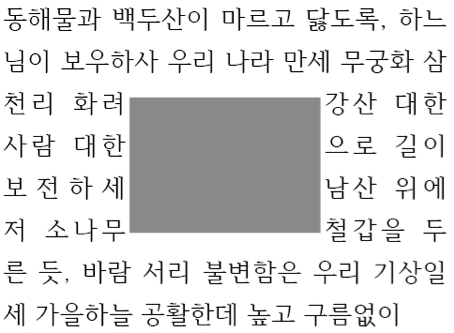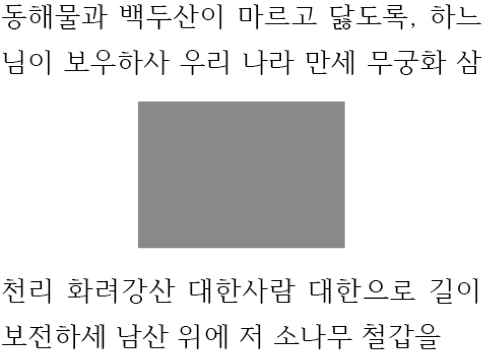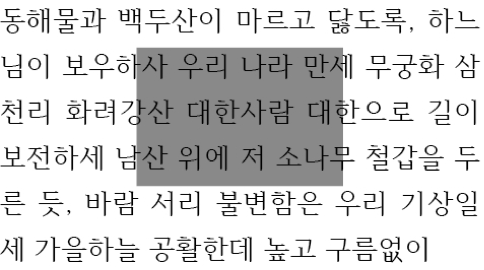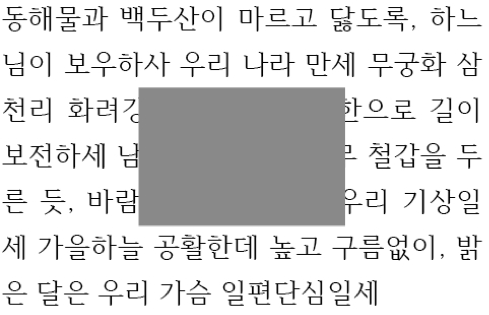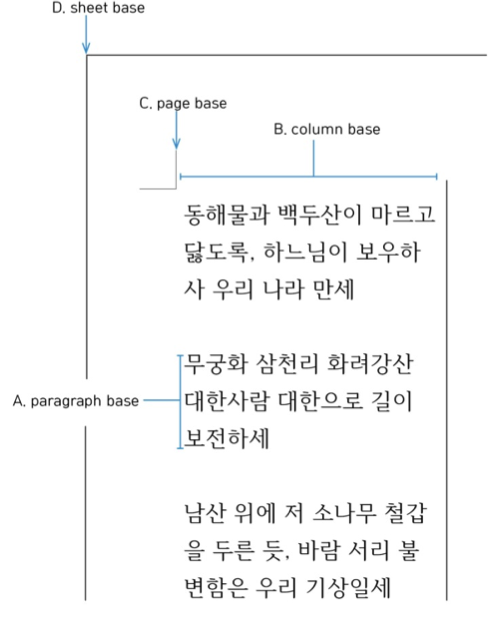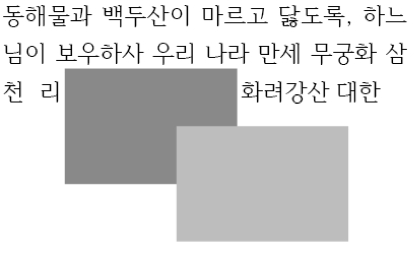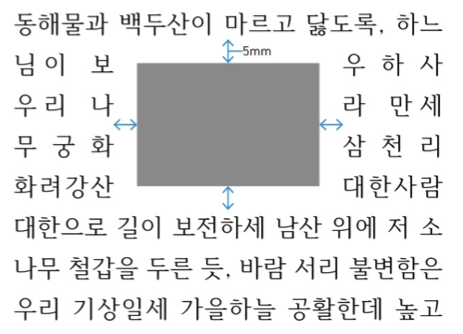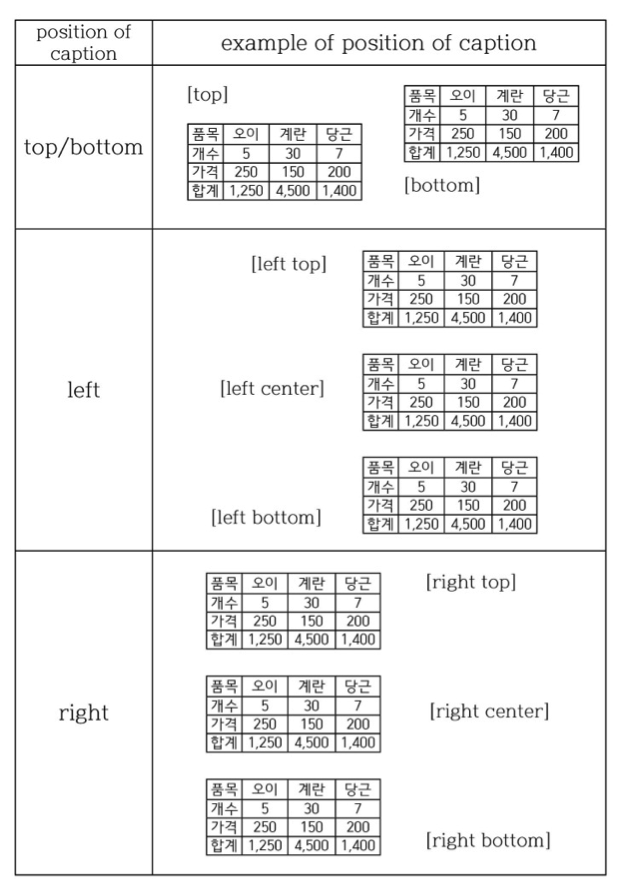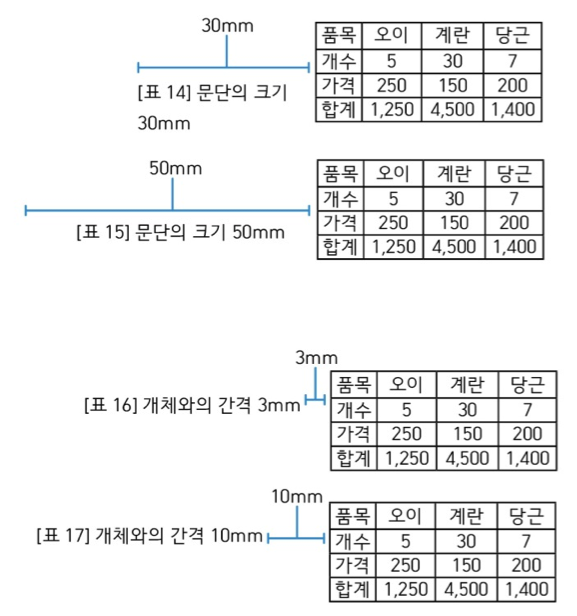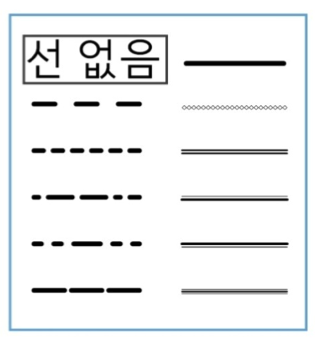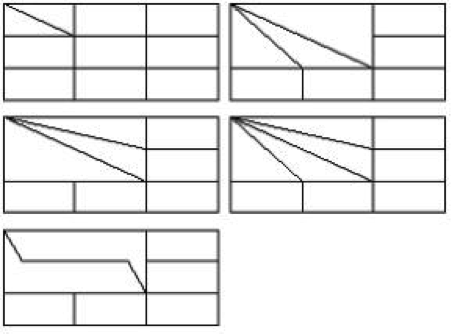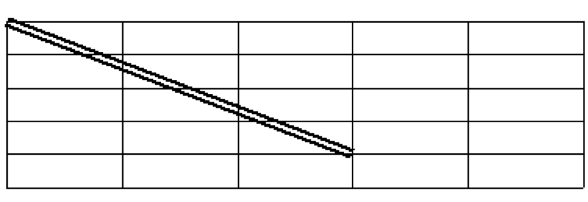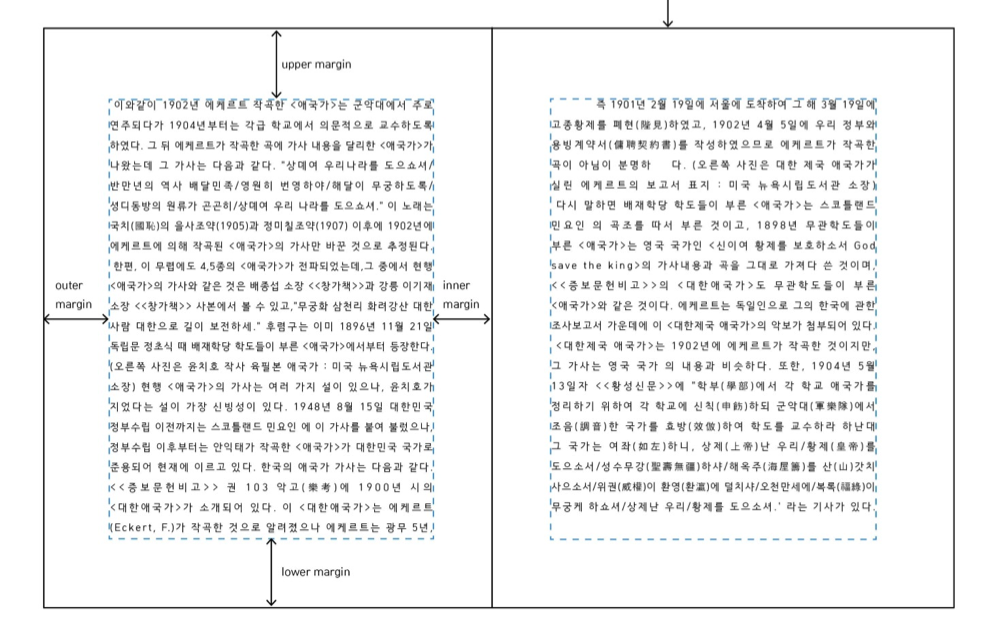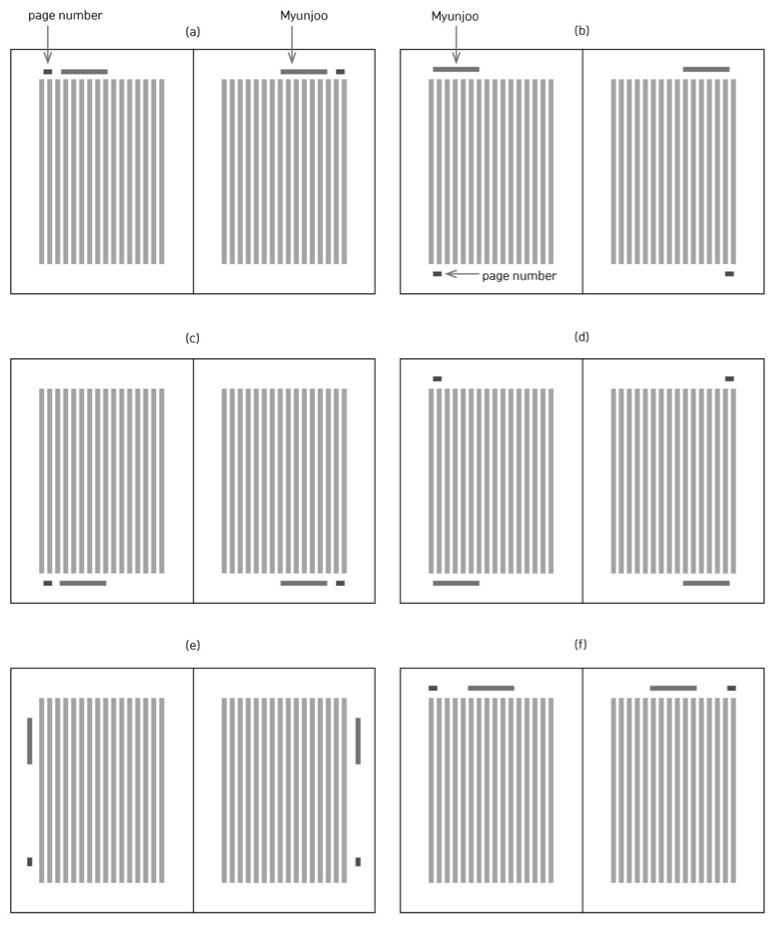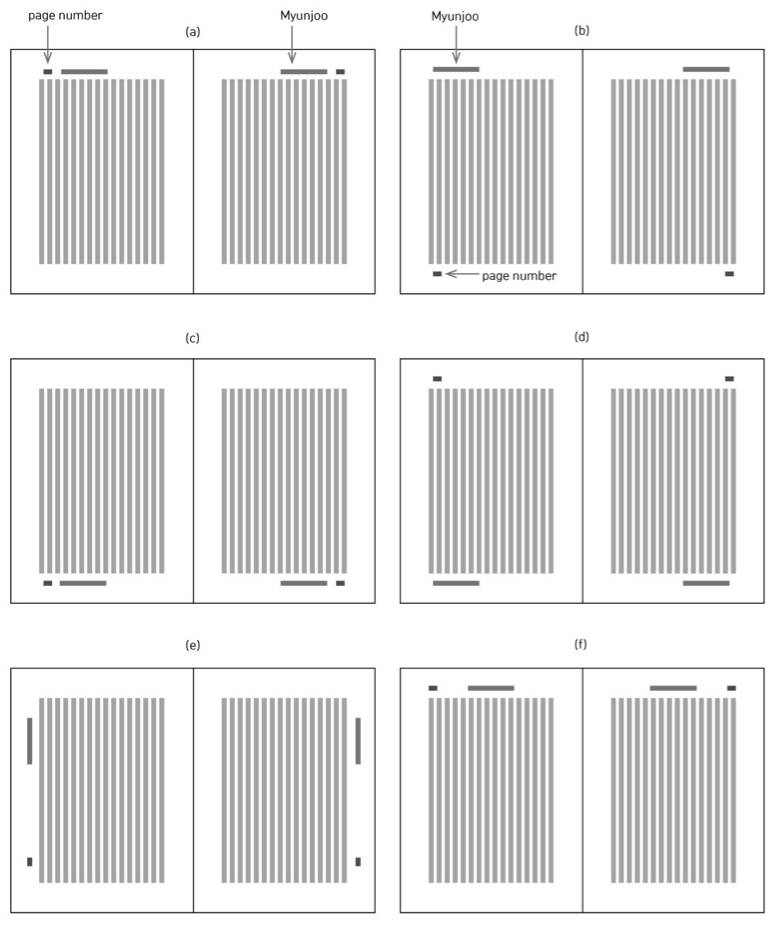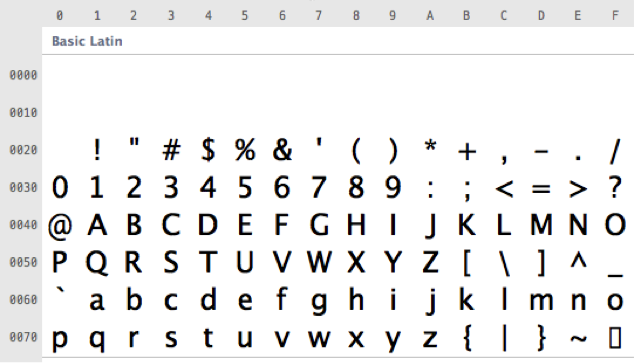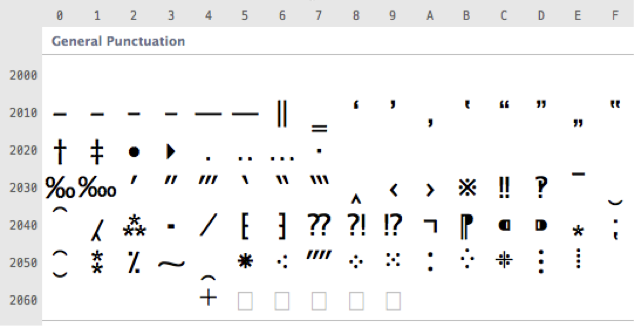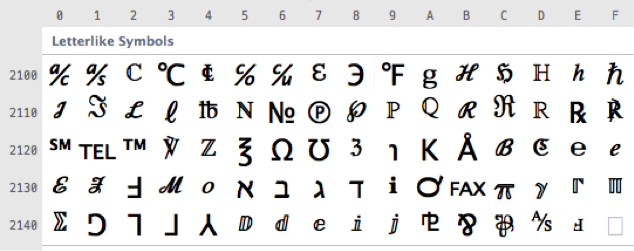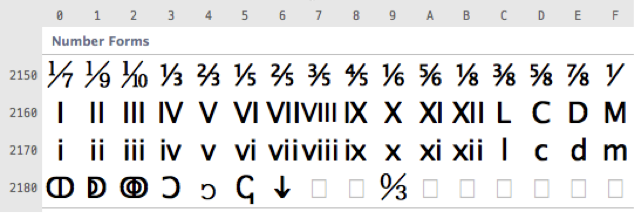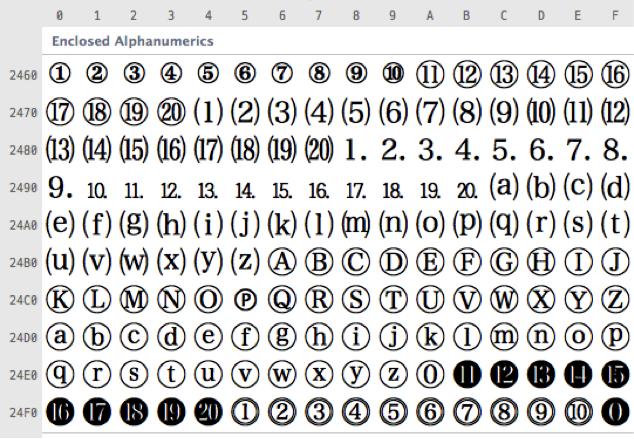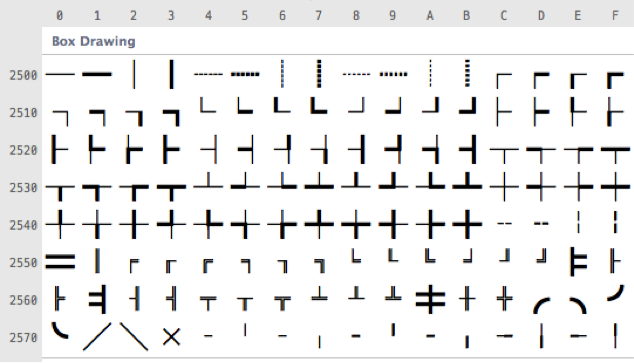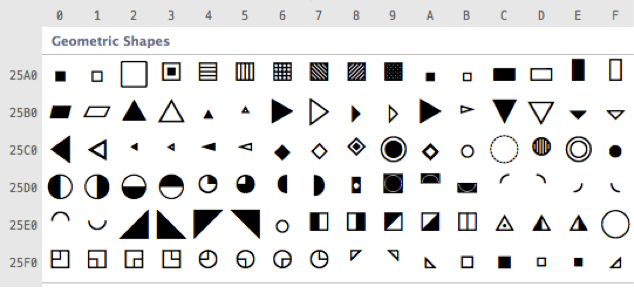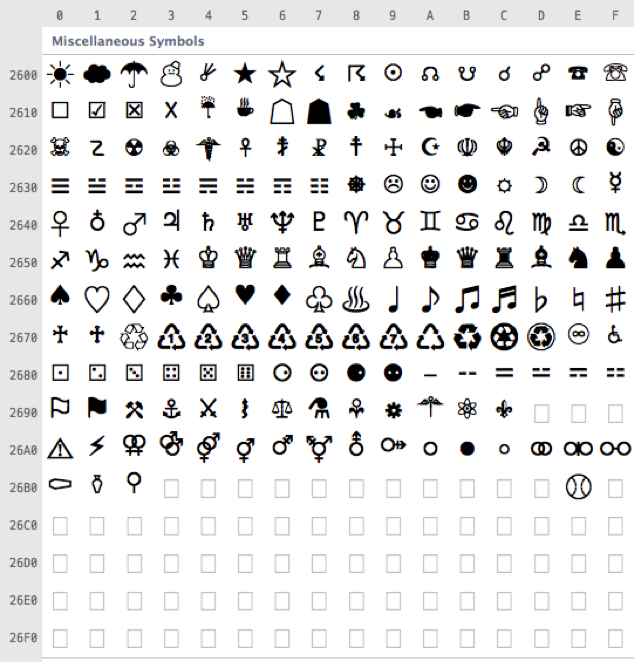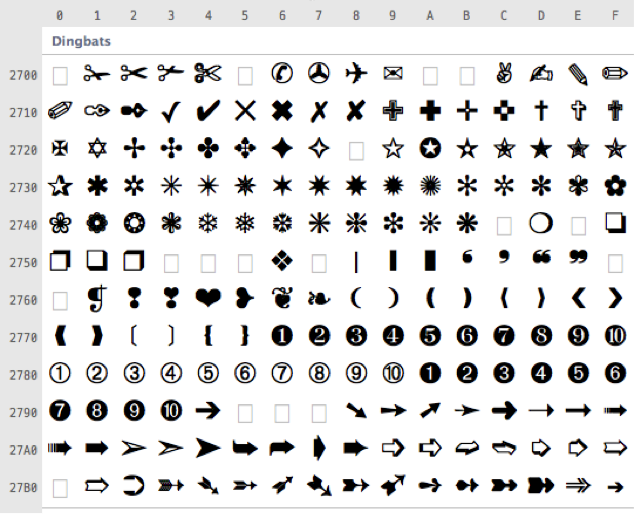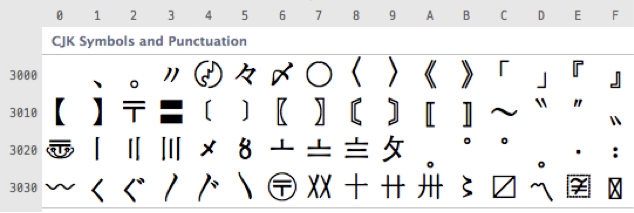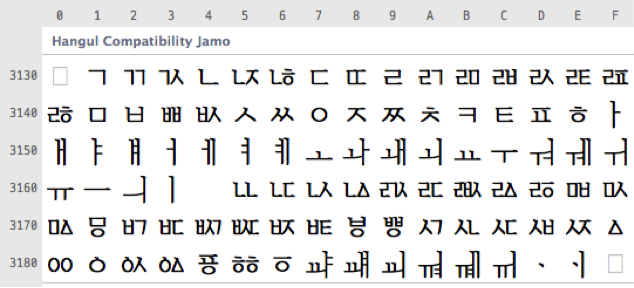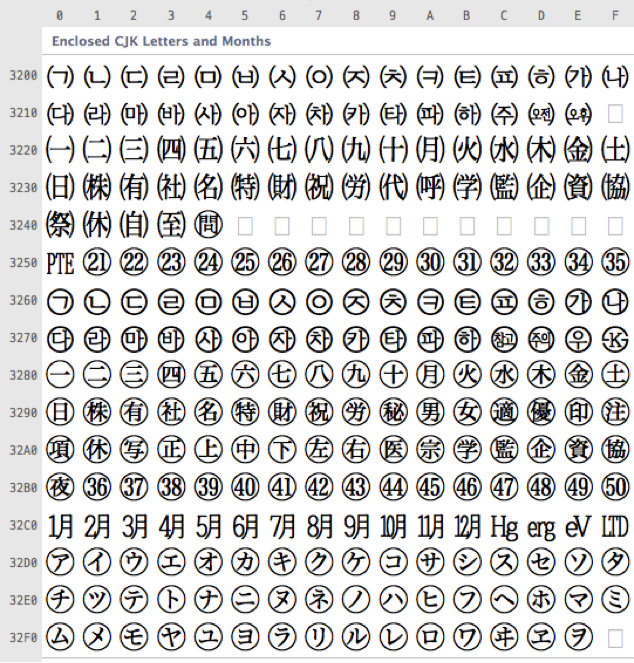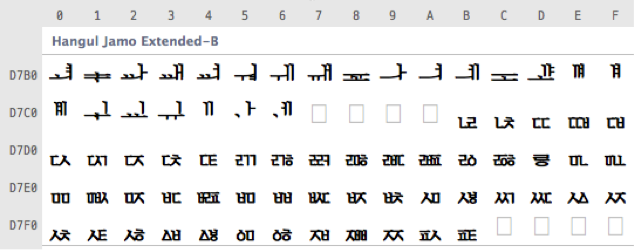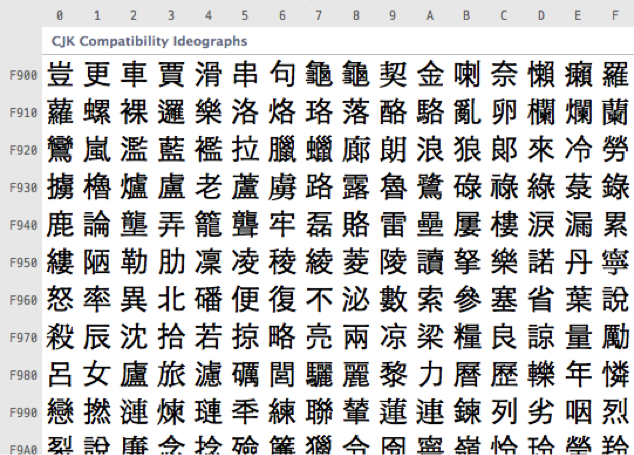2.3 'Letter Face Position in Character Frame' Standard
'Letter Standardization of 'letter face position in character frame' of fixed width Hangul font standardization is to improve fonts improves the compatibility of the space between Hangul font characters characters. (The relation of between each side's spaces remains even when the Hangul font is changed. It prevents a paragraph's left outline being scattered when the opening quotation mark·parenthesis mark or parenthesis at the line head has an unexpected space).
2.3.1 Arrangement of 'Letter Face Position in Character Frame' for Full Width Parenthesis Parentheses
In horizontal writing, the letter face of a full width opening parenthesis is placed on the right end of the character frame, and the left space is considered as a user control controlled area. In vertical writing, the letter face of a full width opening parenthesis is placed on the bottom end of character frame, and the space is considered as a user control controlled area.
In horizontal writing, the letter face of a full width closing parenthesis is placed on the left end of the character frame, and the space is considered a user control controlled area. In vertical writing, the letter face of a full width closing parenthesis is placed on the top end of the character frame, and the space is considered as a user control controlled area.
2.3.2 Arrangement of 'Letter Face Position in Character Frame' for Punctuation
The letter face of punctuation mark marks is placed on at the left end of the character frame. The insert: <del> left insert: </del> insert: <ins> remaining insert: </ins> space is available for use as a controllable margin by the font user.
2.4 Adjustment of Kerning for Hangul Fonts
This is a typographic option for adjusting the kerning between all characters or character classes used in a Hangul environment. insert: <span class="ed"> [Ednote: Is there some content missing that should come after the definition, or is this sentence meaning to say that Hangul characters do kerning?] insert: </span>
















